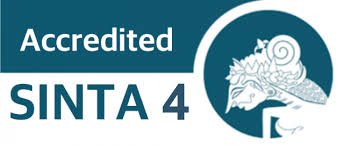PENGEMBANGAN MEDIA OZAMATH BERBASIS ANDROID TERHADAP KEMAMPUAN KONEKSI MATEMATIS DAN MOTIVASI SISWA PADA MATERI MATRIKS PERSEGI
https://doi.org/10.30605/pedagogy.v10i3.6603
Keywords:
Media Android, Koneksi Matematis, MotivasiAbstract
Peserta didik sering mengalami kesulitan dalam mengaitkan konsep matematika dengan kehidupan sehari-hari, serta menunjukkan motivasi belajar yang rendah, khususnya pada materi matriks persegi. Untuk mengatasi permasalahan ini, penelitian ini bertujuan untuk mengembangkan dan menguji efektivitas media pembelajaran OzaMath berbasis android dalam meningkatkan kemampuan koneksi matematis dan motivasi belajar siswa. Penelitian ini menggunakan model pengembangan ADDIE yang terdiri atas tahap analyze, design, develop, implement, dan evaluate. Instrumen penelitian meliputi tes, angket, dan pedoman wawancara. Validasi dilakukan oleh pakar, uji kepraktisan oleh siswa dan guru di SMAN 1 Sindang, serta uji efektivitas di SMKN 1 Lelea. Hasil menunjukkan bahwa media ini layak digunakan, praktis dalam pembelajaran, dan efektif dalam meningkatkan koneksi matematis serta motivasi siswa. Dengan demikian, media berbasis Android dapat menjadi alternatif inovatif dalam menciptakan pembelajaran matematika yang kontekstual dan menarik.
Downloads
References
Addae, R. K. (2024). Contribution to 2x2 and 3x3 Matrix Multiplication using the Jump on Product-Sum approach. October. https://doi.org/10.13140/RG.2.2. 18983.97443
Amerstorfer, C. M., & Freiin von Münster-Kistner, C. (2021). Student Perceptions of Academic Engagement and Student-Teacher Relationships in Problem-Based Learning. Frontiers in Psychology, 12(October), 1–18. https://doi.org/1 0.3389/fpsyg.2021.713057 DOI: https://doi.org/10.3389/fpsyg.2021.713057
Ariyanti, N., Taurusta, C., & Amir, M. F. (2022). Matrix Calculator Based on Android as The Implementation of Independent Campus Learning. Procedia of Sciences and Humanities, 0672(c), 1237–1251. https://pssh.umsida.ac.id.
Bicer, A., Lee, Y., Perihan, C., Capraro, M. M., & Capraro, R. M. (2020). Considering mathematical creative self-efficacy with problem posing as a measure of mathematical creativity. Educational Studies in Mathematics, 105(3), 457–485. https://doi.org/10.1007/s10649-020-09995-8 DOI: https://doi.org/10.1007/s10649-020-09995-8
Emanuel, E. P. L., Kirana, A., & Chamidah, A. (2021). Enhancing students’ ability to solve word problems in Mathematics. Journal of Physics: Conference Series, 1832(1). https://doi.org/10.1088/1742-6596/1832/1/012056 DOI: https://doi.org/10.1088/1742-6596/1832/1/012056
Jawad, L. F. (2022). Mathematical connection skills and their relationship with productive thinking among secondary school students. Periodicals of Engineering and Natural Sciences, 10(1), 421–430. https://doi.org/10.215 33/pen.v10i1.2667 DOI: https://doi.org/10.21533/pen.v10.i1.548
Panagiota Panteli, & Areti Panaoura. (2020). The Effectiveness of Using Mobile Learning Methods in Geometry for Students with Different Initial Mathematical Performance. Social Education Research, 1(1), 1–10. https://d oi.org/10.37256/ser.112020128.1-10 DOI: https://doi.org/10.37256/ser.112020128.1-10
Pant, S., Kumar, A., Ram, M., Klochkov, Y., & Sharma, H. K. (2022). Consistency Indices in Analytic Hierarchy Process: A Review. Mathematics, 10(8), 1–15. https://doi.org/10.3390/math10081206 DOI: https://doi.org/10.3390/math10081206
Qohar, A., Susiswo, Nasution, S. H., & Wahyuningsih, S. (2021). Development of Android-Based Mathematics Learning Game on the Topic of Congruence and Similarity. International Journal of Interactive Mobile Technologies, 15(9), 52–69. https://doi.org/10.3991/ijim.v15i09.20723 DOI: https://doi.org/10.3991/ijim.v15i09.20723
Rahardja, U., Aini, Q., Khairunisa, A., & Millah, S. (2021). Implementation of Blockchain Technology in Learning Management System (LMS). APTISI Transactions on Management (ATM), 6(2), 112–120. https://doi.org/10.330 50/atm.v6i2.1396 DOI: https://doi.org/10.33050/atm.v6i2.1396
Rodríguez-Nieto, C. A., Rodríguez-Vásquez, F. M., & García-García, J. (2021). Pre-service math teachers’ mathematical connections in the context of problem-solving about the derivative. Turkish Journal of Computer and Mathematics Education (TURCOMAT), 12(1), 202–220. https://doi.o rg/10.16949/turkbilmat.797182 DOI: https://doi.org/10.17762/turcomat.v12i1.274
Sarifah, I., Rohmaniar, A., Marini, A., Sagita, J., Nuraini, S., Safitri, D., Maksum, A., Suntari, Y., & Sudrajat, A. (2022). Development of Android Based Educational Games to Enhance Elementary School Student Interests in Learning Mathematics. International Journal of Interactive Mobile Technologies, 16(18), 149–161. https://doi.org/10.3991/ijim.v16i18.32949 DOI: https://doi.org/10.3991/ijim.v16i18.32949
Sulistyo, W. D., & Kurniawan, M. N. L. K. B. (2020). The development of “Jeger” application using android platform as history learning media and model. International Journal of Emerging Technologies in Learning, 15(7), 110–122. https://doi.org/10.3991/IJET.V15I07.11649 DOI: https://doi.org/10.3991/ijet.v15i07.11649
Wang, C., Shen, J., & Chao, J. (2021). CT IN STEM 1 Integrating Computational Thinking in STEM Education: A Literature Review (accepted on Sep. 27 (Issue 305). https://link.springer.com/article/10.1007/s10763-021-10227-5
Yosiana, Y., Djuandi, D., & Hasanah, A. (2021). Mobile learning and its effectiveness in mathematics. Journal of Physics: Conference Series, 1806(1). https://doi.org/10.1088/1742-6596/1806/1/012081 DOI: https://doi.org/10.1088/1742-6596/1806/1/012081
Downloads
Published
How to Cite
Issue
Section
License
Copyright (c) 2025 Denni Ismunandar, Tri Wulan Ningsih, Farid Gunadi

This work is licensed under a Creative Commons Attribution 4.0 International License.
In submitting the manuscript to the journal, the authors certify that:
- They are authorized by their co-authors to enter into these arrangements.
- The work described has not been formally published before, except in the form of an abstract or as part of a published lecture, review, thesis, or overlay journal.
- That it is not under consideration for publication elsewhere,
- That its publication has been approved by all the author(s) and by the responsible authorities – tacitly or explicitly – of the institutes where the work has been carried out.
- They secure the right to reproduce any material that has already been published or copyrighted elsewhere.
- They agree to the following license and copyright agreement.
License and Copyright Agreement
Authors who publish with this journal agree to the following terms:
- Authors retain copyright and grant the journal right of first publication with the work simultaneously licensed under Creative Commons Attribution License (CC BY 4.0) that allows others to share the work with an acknowledgment of the work's authorship and initial publication in this journal.
- Authors are able to enter into separate, additional contractual arrangements for the non-exclusive distribution of the journal's published version of the work (e.g., post it to an institutional repository or publish it in a book), with an acknowledgment of its initial publication in this journal.
- Authors are permitted and encouraged to post their work online (e.g., in institutional repositories or on their website) prior to and during the submission process, as it can lead to productive exchanges, as well as earlier and greater citation of published work.















